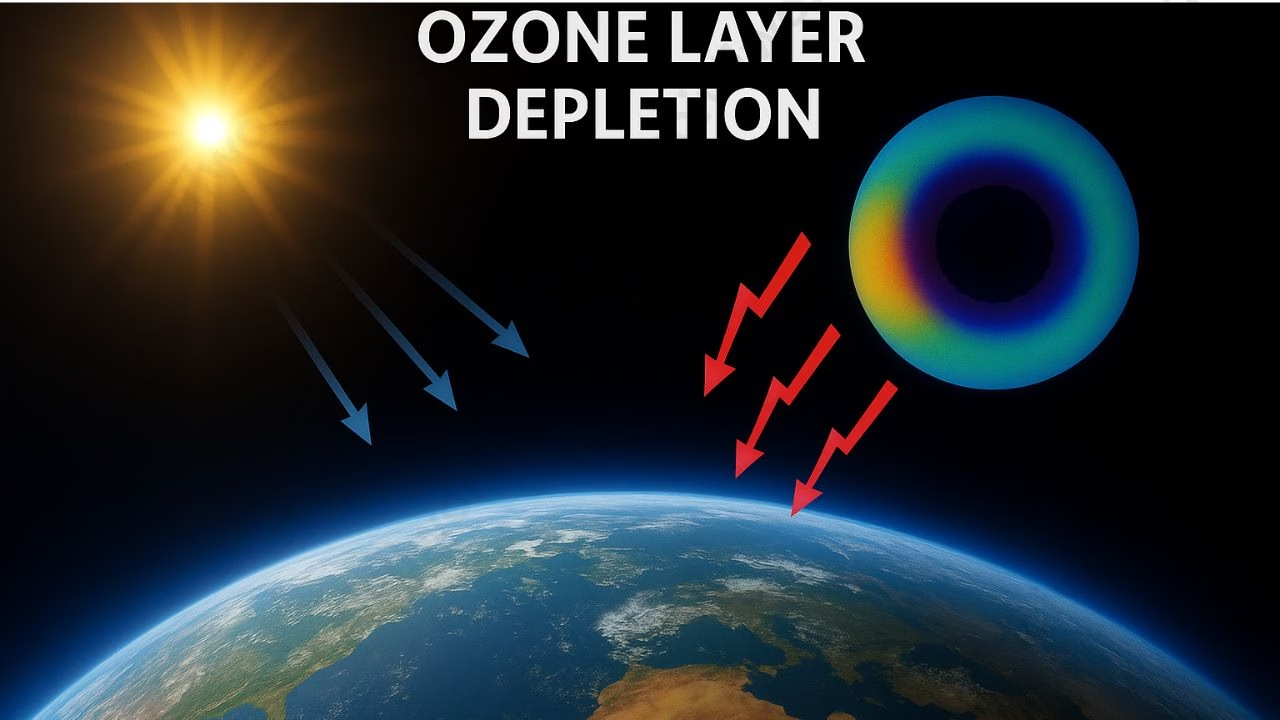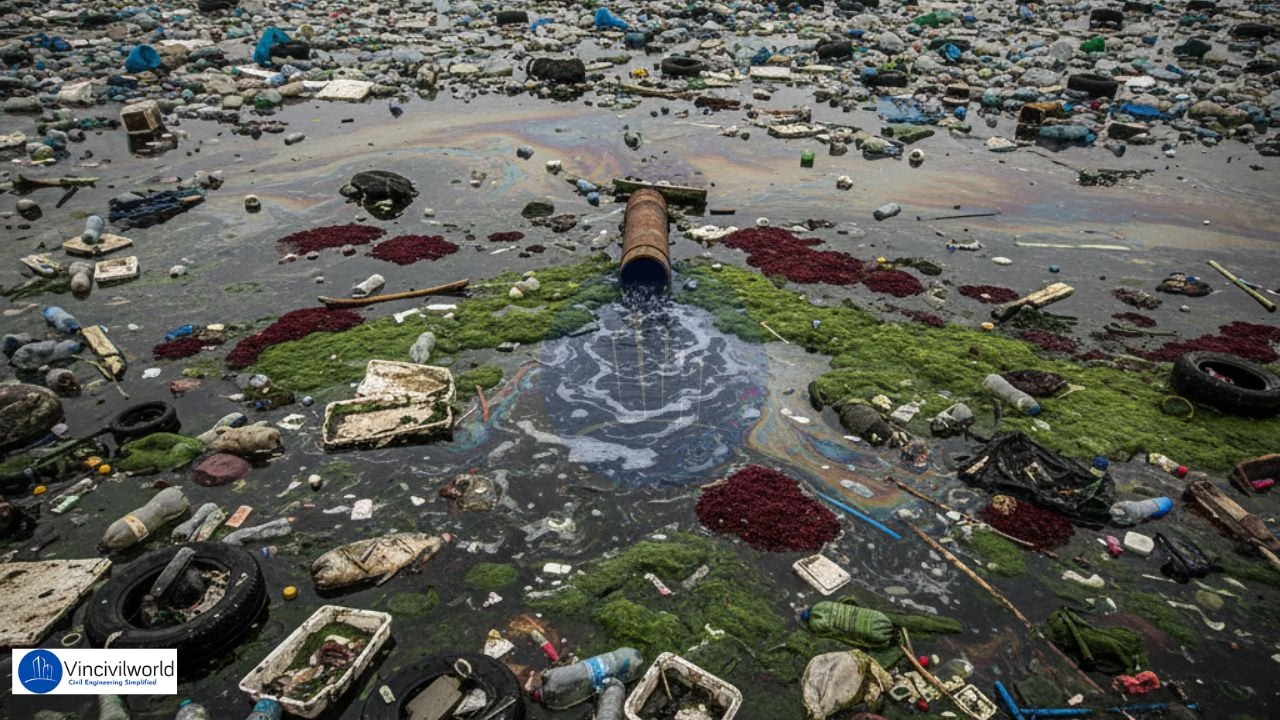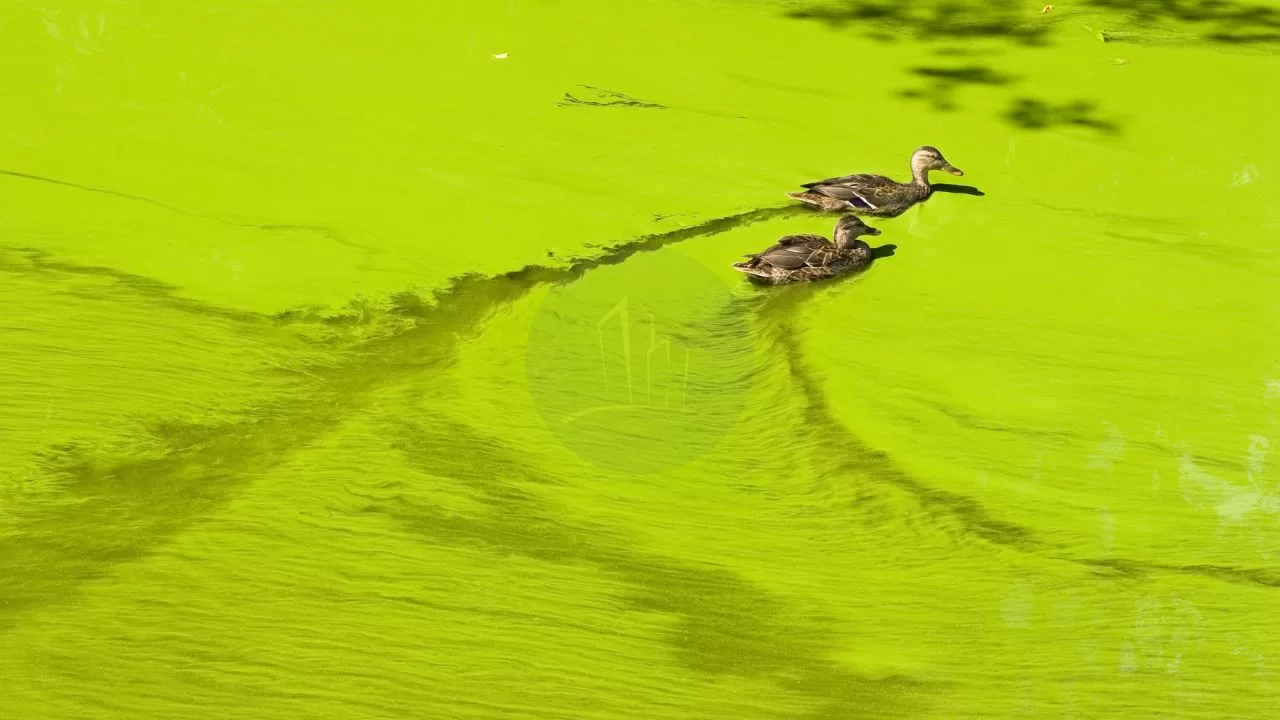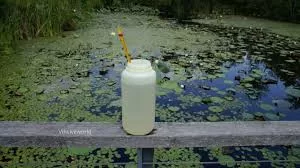Ozone layer depletion represents one of humanity’s most significant environmental challenges, profoundly impacting life on Earth. This critical issue, driven primarily by the causes of ozone depletion such as industrial chemicals, has led to a noticeable effects of ozone layer thinning across our planet. Understanding the intricate processes by which our protective atmospheric shield is compromised, particularly through the release of compounds like CFCs and ozone layer depletion, is paramount to appreciating the urgency of the situation. Fortunately, global efforts have rallied around finding viable solutions for ozone layer recovery. This introduction sets the stage for a deeper dive into the science, consequences, and optimistic outlook for the effects of ozone layer thinning, highlighting the importance of collective action in safeguarding our planet’s vital atmospheric blanket.
Ozone Layer thinning/Depletion was a problem that started haunting environmentalists and the common people alike since the 1980s. In this blog, let me show you what is the ozone layer, its role, causes and effects of its depletion.
Table of contents
What is the Ozone Layer?
The ozone layer is an area of the earth’s stratosphere that contains high levels of ozone (O3) and protects the planet from the sun’s harmful ultraviolet rays. It can absorb roughly 97-99 percent of the sun’s damaging UV radiation, which otherwise can kill life on the Earth.
Ozone
Ozone is an allotrope of oxygen and is much less stable than the common diatomic allotrope O2. Hence it easily breaks down to O2 breaking down in the lower atmosphere. Ozone is formed from dioxygen under the action of ultraviolet (UV) light and electrical discharges in the Earth’s atmosphere. The process of ozone creation and destruction is called the Chapman cycle.
2 O3 → 3 O2
We can find ozone in both the upper (stratosphere) and lower layers (troposphere) of the atmosphere. The troposphere is the layer closest to the Earth’s surface. The troposphere typically reaches a height of about 6 miles, where it meets the stratosphere, the second layer. Depending on its location in the atmosphere, ozone can be “good” or “bad” for your health and the environment.
Tropospheric Ozone
Ground-level ozone, sometimes known as “bad” ozone, is a toxic atmospheric pollutant that affects crops, trees, and other vegetation. It is a major contributor to urban smog.
It forms when sunlight reacts with air containing hydrocarbons and nitrogen oxides either directly at the source of pollution or many kilometers downwind. Photolysis of ozone by UV light produces the hydroxyl radical HO•, which is the initial step in the formation of smog components such peroxy acyl nitrates.
Ozone works as a greenhouse gas by absorbing some of the earth’s infrared radiation. Tropospheric ozone has an annual global warming potential of 918 to 1022 tones of carbon dioxide equivalent/tons tropospheric ozone. This suggests that ozone in the troposphere has a radiative forcing effect 1,000 times stronger than carbon dioxide on a per molecule basis.
However, tropospheric ozone is a short-lived greenhouse gas that degrades faster in the atmosphere than carbon dioxide. Hence, in the long run, it doesn’t cause as much harm as Carbon Dioxide.
Stratospheric Ozone
We can find the highest levels of ozone in the stratosphere, in a region also known as the ozone layer. This region extends between about 10 km and 50 km above the surface of Earth. This is “good ozone” which absorbs almost the entire UV-B band (280–315 nm). If the UV-B reaches the Earth’s surface it can cause damage to humans and other organisms including sunburns and skin cancers.
Scientists, on the other hand, have identified a hole in the ozone layer over Antarctica. Let me explain how ozone layer depletion occurs.
Also read: Acid Rain – Definition, Causes, Effects, and Solutions
Definition of Ozone Layer Depletion
Ozone Layer Depletion is the gradual thinning of the earth’s ozone layer in the upper atmosphere caused by chemical compounds containing gaseous bromine or chlorine from industry or other human activities.
When chlorine and bromine atoms in the atmosphere come into contact with ozone, the atoms destroy the ozone molecules. One molecule of chlorine can destroy 100,000 ozone molecules. It depletes faster than it forms.
Also read: What are air pollutants? | Types, sources and effects of air pollution
Certain chemicals on exposure to intense ultraviolet radiation, emit chlorine and bromine, which contributes to the ozone layer’s depletion. Ozone Depleting Substances are substances that deplete the ozone layer (ODS). Following are some chemicals that fall under the category of ODS.
- Chlorofluorocarbons (CFCs)
- Hydrochlorofluorocarbons (HCFCs)
- Bromofluorocarbons
- Hydrobromofluorocarbon (HBFCs)
- Halons
- Methyl bromide
- Carbon tetrachloride
The Ozone Layer Hole
Due to a lack of sunshine and a restricted mixing of lower stratospheric air above Antarctica with the air outside the region, the air over the Antarctic gets exceptionally chilly during the winter. The circumpolar vortex, often known as the polar winter vortex, is a large area of low pressure and cold air surrounding both of the Earth’s poles. It is responsible for this poor mixing.
Polar Stratospheric Clouds (PSC) originate at altitudes of 12 to 22 kilometers as a result of the exceptionally cold temperatures inside the vortex above the poles. PSC particles undergo chemical processes that change the less reactive chlorine-containing molecules into more reactive forms like molecular chlorine (Cl2), which accumulate throughout the polar winter. These cloud particles can also react with bromine-containing chemicals and nitrogen oxides.
When the sun returns to Antarctica in the early spring, the molecular chlorine breaks down into single chlorine atoms, which can combine with and destroy ozone. The breakdown of ozone continues until the polar vortex breaks up, which generally happens in November. Hence there is a vast area over the Antarctic region where the ozone layer underwent considerable depletion and is extremely thin. We commonly refer to this as the ‘ozone hole‘.
Chemistry of the Ozone Layer Depletion
Because of their poor reactivity, chlorofluorocarbons can rise to the stratosphere without undergoing degradation in the troposphere. UV light liberates the Cl and Br atoms from the parent molecules once they reach the stratosphere, e.g.
CFCl3 + electromagnetic radiation → Cl· + ·CFCl2
Ozone is a highly reactive molecule that can rapidly reduce to a more stable oxygen form with the help of a catalyst. Cl and Br atoms destroy ozone molecules in several catalytic reactions. An ozone molecule (O) reacts with a chlorine atom forming chlorine monoxide (ClO) from an oxygen atom and leaving an oxygen molecule (O2).
Cl· + O3 → ClO + O2
The ClO can react with a second molecule of ozone to release the chlorine atom and produce two oxygen molecules.
ClO + O3 → Cl· + 2 O2
The chlorine is free to repeat this two-step cycle. The overall effect is a decrease in the amount of ozone.
Ozone Layer Depletion Causes
Depletion of the ozone layer is a great concern that is linked to a variety of causes. The following are the primary factors that contribute to the ozone layer’s depletion:
Chlorofluorocarbons
The main source and causes of ozone layer depletion is chlorofluorocarbons or CFCs. Solvents, spray aerosols, freezers, and air conditioners, among other things, emit these chlorofluorocarbons. The ultraviolet radiations in the stratosphere break down chlorofluorocarbon molecules, releasing chlorine atoms. These atoms degrade ozone by reacting with it as we had seen above.
Unregulated Rocket Launches
According to studies, the unregulated launch of rockets depletes the ozone layer far more than CFCs do. If not addressed, this might result in a significant depletion of the ozone layer by 2050. Increased international space launches, as well as the possibility of a commercial space travel boom, may soon make rockets the worst offenders in terms of ozone depletion.
When solid-fuel rockets blast off, it releases chlorine gas directly into the stratosphere, where it interacts with oxygen to produce ozone-depleting chlorine oxides. Rocket oxidizer contains soot and aluminium oxide, which depletes upper-atmosphere ozone, which protects the Earth’s surface from harmful ultraviolet rays.
Natural Factors
Certain natural phenomena, such as Sunspots and stratospheric winds degrade the ozone layer. However, it only contributes to roughly 1-2 percent of ozone layer depletion. Volcanic eruptions are also to blame for the ozone layer’s depletion.
Effects of Ozone Layer thinning/depletion
The following are the devastating effects of ozone depletion.
Higher Levels of UV
While ozone is a minor component of the Earth’s atmosphere, it is responsible for the majority of UV-B absorption. With increasing slant-path thickness and density, the amount of UVB radiation that penetrates the ozone layer falls rapidly. [58] Higher levels of UVB reach the Earth’s surface as stratospheric ozone levels fall.
Increased ozone in the troposphere
Increased surface UV causes increased tropospheric ozone. Since ozone is hazardous due to its powerful oxidant capabilities, ground-level ozone is well recognised as a health hazard. Young children, and individuals with asthma or other respiratory problems are especially vulnerable. At this time, the action of UV radiation on combustion gases from car exhausts is the primary source of ozone at ground level.
Crop-related effects
An increase in UV radiation is likely to have an impact on crops. For the retention of nitrogen, many commercially significant plant species, such as rice, rely on cyanobacteria living on their roots. Cyanobacteria are sensitive to UV light and this, in turn, can affect the nitrogen retention of rice plants.
Biological consequences
The impacts of increasing surface UV radiation on human health have been the principal public worry about the ozone hole. Exposure to UV radiation can cause Basal and squamous cell carcinomas, Malignant melanoma and Cortical cataracts.
Effect on plants
The stress that plants suffer when exposed to UV radiation is another key effect of ozone depletion on plant life. This can lead to a decline in plant development and an increase in oxidative stress. Reduced plant growth will have long-term repercussions, including a drop in the amount of carbon that plants capture and sequester from the environment.
Furthermore, when plants are exposed to excessive quantities of UV light, they emit isoprenes into the air, which contributes to air pollution and increases the quantity of carbon in the atmosphere, ultimately contributing to climate change.
As scientists and world leaders became aware of ozone depletion and its damaging effects, they signed an international agreement to revive the ozone layer. Let’s have a closer look into it.
Also read: Environmental Laws of India – A Complete Guide
Solutions for ozone layer recovery
Solutions for ozone layer recovery primarily stem from global cooperation and targeted chemical regulations.
The Montreal Protocol
- The Montreal Protocol or Montreal Protocol on Substances that Deplete the Ozone Layer was adopted in 1987 as part of the Vienna Convention. It promotes international cooperation in reversing the rapid drop in ozone concentrations in the atmosphere.
- To honour the signing of the Montreal Protocol on 16th September 1987, the United Nations General Assembly designated September 16 as International Day for the Preservation of the Ozone Layer, or “World Ozone Day,” in 1994.
- Eliminating Harmful Chemicals: Countries have banned chemicals like chlorofluorocarbons (CFCs) used in aerosols and refrigerants, and halons used in fire extinguishers.
- Responsible Disposal: Programs have been established for the safe recovery and destruction of ODS from old appliances, such as refrigerators and air conditioners, preventing them from escaping into the atmosphere.
- Developing Alternatives: Industry has developed and adopted safer, ozone-friendly chemical alternatives for refrigeration, air conditioning, and other applications.
Key Takeaways
- Ozone Layer Depletion poses a significant environmental challenge, driven by industrial chemicals like CFCs and resulting in the thinning of the ozone layer.
- The ozone layer protects Earth from harmful UV radiation; its depletion can cause increased UV exposure, leading to health and ecological impacts.
- The Montreal Protocol, adopted in 1987, aims to promote international cooperation to recover the ozone layer, designating September 16 as World Ozone Day.
- Chlorofluorocarbons (CFCs) are a major contributor to ozone layer depletion, while unregulated rocket launches may exacerbate the problem.
- Increased UV levels due to ozone depletion can harm human health, crops, and biodiversity, highlighting the urgency for collective action.
Conclusion
The ozone layer is a protective umbrella around our mother Earth and saves us from the damaging radiations of the Sun. Let’s join our hands to keep the ozone layer intact for our future generations as well. The ozone layer serves as Earth’s vital shield, a protective umbrella safeguarding all life from the Sun’s harmful ultraviolet radiation. Its depletion, a critical environmental challenge, directly threatens human health, ecosystems, and climate stability. As stewards of this planet, we bear the responsibility to ensure its preservation. Let’s unite our efforts, guided by the success of international protocols and continued innovation, to keep the ozone layer intact. Our collective commitment to reducing ozone-depleting substances and embracing sustainable practices is not just an environmental imperative, but a profound investment in the well-being and future of generations to come.
That’s it about ozone layer depletion. Happy Learning!







